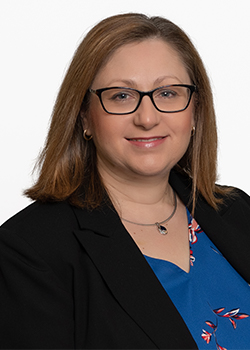ATO takes hard line on in-house asset rules

.
Chris Levy, founder of Aquila Super, said during a recent auditor discussion group session, the ATO “dropped a bombshell” by clarifying the legislation does not support any form of rectification except for the disposal of the in-house asset.
Mr Levy said the ATO used an example of a residential house with a related party tenant.
“The offending asset was the house, not the lease or tenancy agreement,” he said.
“Therefore, removing the tenant and cancelling the lease did not, by itself, meet the specific rectification requirements explicitly stated in the Superannuation (Supervision) Industry Act 1993 (SIS Act).
“The ATO argued that the only acceptable course of action would be to sell the house.”
He said the ATO recently turned its attention to in-house asset breaches, and, more specifically, what a fund is required to do to resolve the breach satisfactorily.
He said the way trustees and advisers have typically dealt with a breach can be divided into two broad categories with the more drastic but cleaner option involving the sale or disposal of the offending in-house asset in whole or in part.
“The other more common option involves taking some sort of action to change the character of the asset so that it is no longer caught by the in-house asset net,” he said.
This may involve the removal of a related tenant from a residential apartment or restructuring the equity framework or management of a semi-related unit trust so members and associated entities no longer ‘control’ the trust.
“This action means the trustee can now assert that the underlying problem has been fixed and the investment is no longer considered an in-house asset,” Mr Levy said.
“The SMSF will likely still be subject to a contravention report for the initial in-house asset breach, but the ATO has to date accepted such an approach as satisfactory rectification.”
However, Mr Levy said the ATO’s announcement has cast doubt on the legal validity of this approach.
“The reaction of many was to race off to the legislation thinking that there was some mistake or that the ATO’s interpretation was overly strict and possibly mistaken,” he said.
“However, a literal reading of the relevant sections of the Act provides some solid legal basis to the ATO’s position.”
He continued that under section 82 of the SIS Act, an in-house asset breach requires a trustee to first prepare a plan to correct the in-house breach, and later in the same section to carry out that plan.
The requirements of this rectification plan are outlined in section 82(4), and state: “The plan must set out the steps which the trustee proposes…to ensure that:
(a) one or more of the fund's in-house assets held at the end of that year of income are disposed of during the next following year of income; and
(b) the value of the assets so disposed of is equal to or more than the excess amount”.
“The absence of any mechanism, other than disposal of the in-house asset itself, is striking,” Mr Levy said.
Although some SMSF professionals have suggested that changing an in-house asset’s character by removing the relative as a tenant may be an effective ‘disposal’ for the purposes of section 82, Mr Levy said the ATO may not approve of this approach.
“The implications of this ‘new’ position from the Regulator are potentially frightening for SMSFs that invest in assets,” he said.
“It is now even more incumbent on SMSF advisers to educate trustees of the rules and prevent in-house asset breaches from occurring in the first place.”
He continued that one of the bigger concerns over in-house asset breaches deals with business properties involving related tenants.
“Most accountants have a general understanding of the rules surrounding related party tenancies and take care to ensure all dealings are at arm’s length,” he said.
“What is less known by the average accountant is that the in-house asset exemption for business real property under section 71 requires a lease to not only be in place but that it be legally enforceable.”
Care should also be taken when dealing with semi-related trusts and companies, not just at the initial investment stage but over the life of the investment, he continued.
“We have seen these types of investments initially structured with careful diligence to avoid them being caught under the Part 8 associate rules, only to have the trust later become in-house by other unrelated investors withdrawing their money and/or resigning as trustee directors.”
Mr Levy concluded that the ATO does have some discretion to deem an in-house asset to not be one.
“Trustees could therefore seek to have the ATO exercise such discretion through the voluntary disclosure regime, with the goal of fixing the problematic issue without having to be forced to sell the asset as well,” he said.
Keeli Cambourne
24 October 2023
smsfadviser.com







